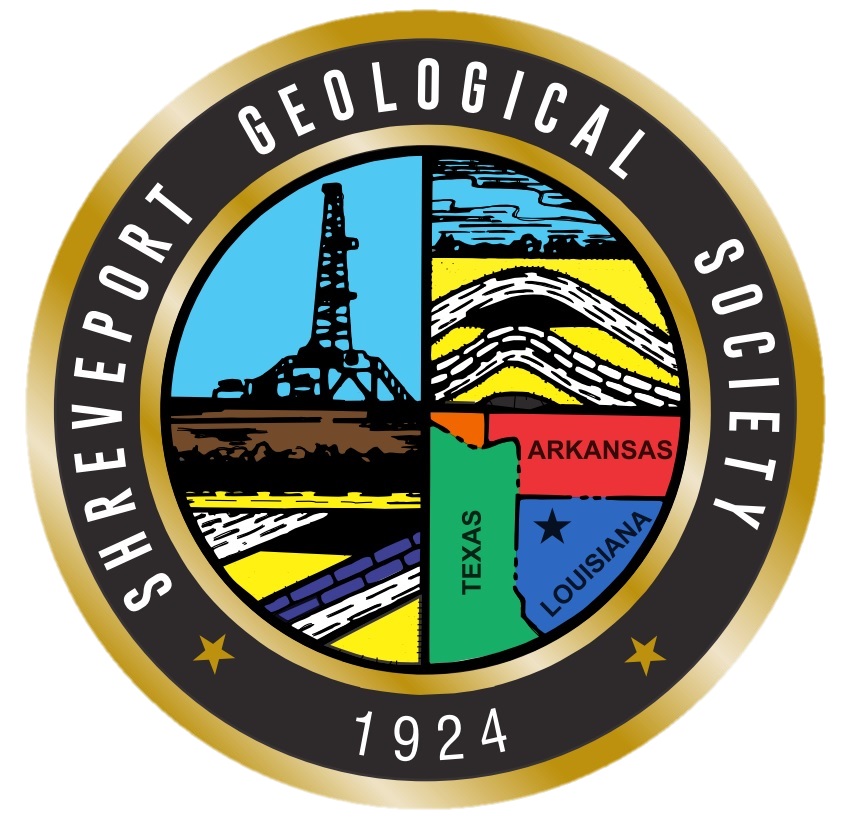EAST TEXAS PALEOZOIC STRAWN REEFS
Presented by: Jim Bedford
In-Person
Where: The Petroleum Club of Shreveport, 15th floor
Member Cost: $25 • Non-Member Cost: $35
SGS now accepts Tap Pay via Zelle for meeting payments!
If you’d like a seat, kindly use the form below to make your reservation by the preceding Friday.
We encourage members to invite guests, spouses, and friends to any of our meetings.
Virtual
Via Microsoft Teams
Member Cost: $10 • Non-Member Cost $15
**After checkout, you will receive an email with the Teams Meeting details. You may sign up anytime before the meeting begins.
Abstract
The Paleozoic in East Texas has always been considered to be below the economic basement. Poorly penetrated, only a few wells drilled by Shell on the Sabine Island, a Pennsylvanian Uplift, in Sabine County which encountered Pennsylvanian/Mississippian carbonates over potentially Ordovician (Ellenberger) dolomites and the subsalt oil production in Cass County which is reported as Eagle Mills. A few other wells scattered across the basin fail to define the Paleozoic.
In 1995, while developing Haynesville reef prospects using seismic, Arco Permian became interested in structures below the LouAnn salt, located Smith County. After extensive research, a 220,000 acre reef complex was mapped and analyzed using seismic, seismic inversion, ray tracing and gravity and magnetics. Acreage was purchased with the intent to drill a test well. Around the same time, ARCO Permian and its partners drilled a Cotton Valley Reef test in Gregg County which blew out in the Smackover when the well crossed an open fault with roots in the subsalt section. Testing indicated a late maturation gas with a signature very different than Smackover/Haynesville. Operations ceased with the pending BP acquisition. ARCO Permian was forced to sell the project and presented the concept in the 1997 NAPE (NAPE Flyer attached). The Wright Mountain Prospect was projected to have up to 2 TCFG over 3000 acres.
Work over the years has greatly enhanced the project. Integrating data from the Shell wells with unreleased stratigraphic and paleo data from the deep Humble #1 Johnson has led to assigning the reef complex to the Strawn period. Erosion and nondeposition has removed the Triassic and Permian sections resulting in the reefs being encased in Callovian LouAnn salt.
The thickness of the reefs in the complex ranges from 150’ to 1200’. Due to the relationship of the reefs and salt it is possible to calculate the average porosity in the reefs. Note: ARCO Permian calculated 22% porosity in the Wright Mountain Project but only used 5-10% in the NAPE brochure. Other reefs had similar average porosities.
With these porosities the potential reserves for the reefs are 150 TCFG, 100 TCF Methane and 50 TCF Nitrogen.
Biography
Mr. Bedford began his career as an exploration geophysicist working offshore for Mobil Oil. After that he became a geologist working for Texas Oil and Gas and several small operators in South Texas.
Upon moving to East Texas, he combined his skills becoming a basin analyst working for his own company and several independents before becoming the lead geoscientist for Arco Permian concentrating on the Cotton Valley (Haynesville) reef play. It was with ARCO Permian that the initial development of what would become the East Texas Strawn Reef play began. With the acquisition of ARCO by BP, he continued as an independent before being hired by Chesapeake Energy as a Senior East Texas earth scientist. At Chesapeake, he worked with a small group who was instrumental in bringing Chesapeake into the Haynesville and Bossier Shale plays before moving into the New Ventures group. In New Ventures, he and the team worked on all the shale plays in the US including the Eagleford, Woodford, Marcellus, Utica, and the Bakken.
Chesapeake added responsibilities to expand and develop the Permian waterfloods purchased as a part of various shale acquisitions. Exploring adjacent fields lead to the development of the migration pathway concept for the Midland Basin Mississippian. When Chesapeake decided to pursue the concept, he moved into the Permian group. During this period the East Texas Strawn play was further developed by Chesapeake. He left Chesapeake when the decision was made to sell the Permian assets.
After Chesapeake, he became the acquisition manager and the Florida manager for Kerogen Exploration. From Kerogen, he became the Rockies Asset Manager for CNOOC. In the past years he has worked for various groups and is currently working to develop geothermal projects in oil and gas fields.







































